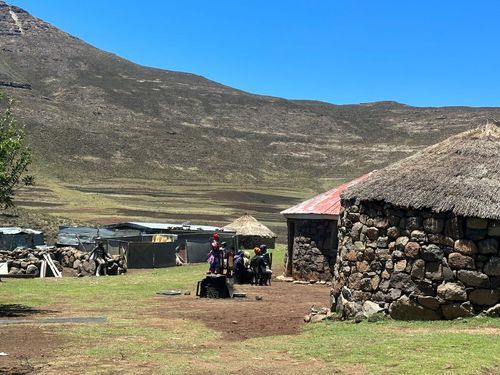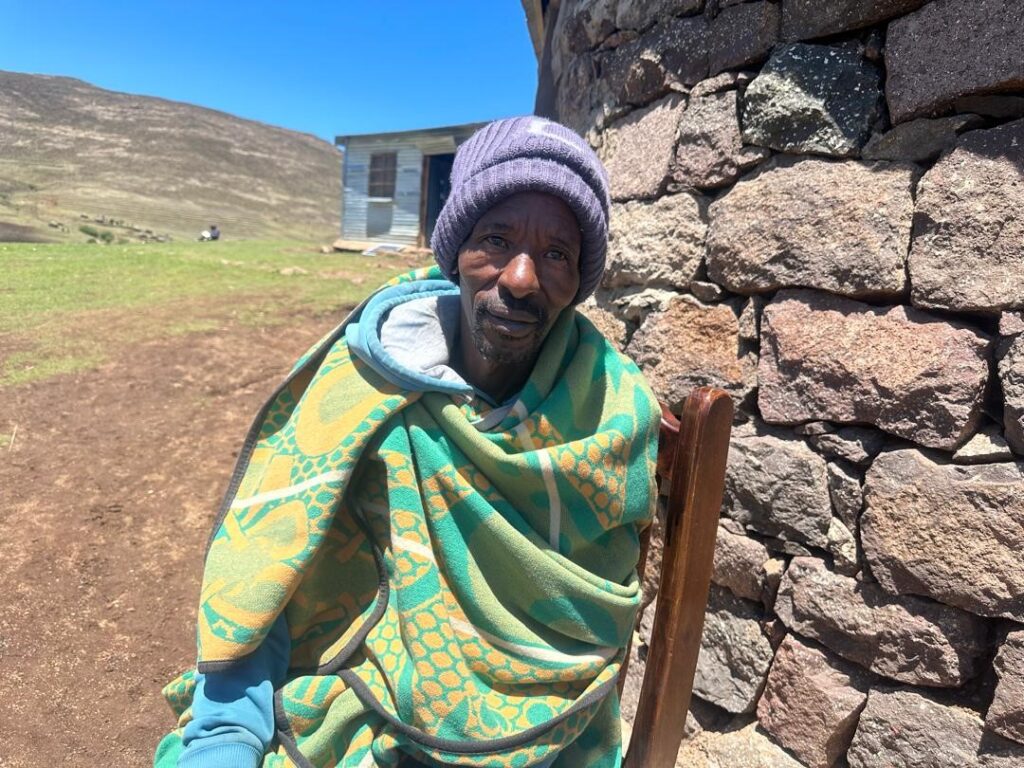By Cindy Sipula, Sechaba Mokhethi and Elfredah Kevin – Alerechi
Part One
A UK diamond mining company that has won awards for improving local communities’ access to clean water has been accused of polluting drinking water in three villages in Lesotho, southern Africa, an investigation has revealed.
Letšeng Diamonds, a subsidiary of GEM-Diamonds, has been linked to the cause of Escherichia coli (E. coli) pollution in Lesotho’s indigenous communities, which was alleged to have caused the death of animals, the extinction of fish, the illnesses of locals, and the death of a child.
GEM-Diamonds made most of its profits from the Letšeng Diamonds, with revenue totalling $1.3 billion from 2017 to 2023 and profits after tax was $259 million between 2017 and 2023.
The Rural Explorer Blog visited three villages in Lesotho’s Maluti Mountains; Maloraneng, Patising, and Lithakong, and all of the community residents we interviewed blamed the company for polluting the community river, which serves as the major source of drinking water, cooking, washing, and fishing, with its wastewater.
A satellite image shows what looks like a suspected pipe from the company’s facility linked to the community river.
On January 24, 2024, water samples were collected directly from the water flowing out of the Letseng Diamonds wastewater pipe —before it entered the community river. The water samples were taken from Feeane stream —50 metres away from the company’s perimeter fence, Patising and Maloraneng streams. According to locals, the company’s wastewater is allegedly channelled into the community river, which the villagers depend on for water.
The water samples were sent for testing in a laboratory in neighbouring South Africa. These revealed the presence of high levels of E. coli of 12 MPN/100mL, exceeding the limit of 1MPN/100mL, and nitrates of 30mg/L surpassing the acceptable upper limit of 11. Both levels of nitrate and E. coli are harmful to human health and animals.
Gem Diamonds, in an email, denied that its wastewater was the cause of E.coli in the community river, and claimed that E.coli is caused by animals using the river. The company said it is aware of the nitrate level but has made efforts to reduce it.
Drinking water contaminated with E.Coli — which often indicates the presence of human or animal faeces in water — can cause illnesses such as diarrhoea, cramps, nausea, and tract infection, according to the US National Centre for Biotechnology Information. Nitrates can be harmful to pregnant women. According to the Maine Centre for Disease Control and Prevention, Ecoli is a clear indicator of sewage or animal contamination.
Transformation Resource Centre (TRC), a human rights NGO in Lesotho said they had made several attempts to solve the water problem with the company but Letseng Diamonds told them the company had asked an expert to conduct the water analysis or could not discuss the water issue because the case is in court or sub judice.
Community Struggles
Maloraneng is a small town near Letšeng Diamonds Mine. It takes more than six hours to drive from Lesotho’s capital, Maseru to the village.
This distance means that Malonareng has limited access to health care services, and villagers often rely on local herbal medicine to treat illnesses. Although there is a local clinic in the village, residents said that health workers only come to the clinic to see patients once a month.

Malineo Moahi’s nine-year-old granddaughter became ill and died in 2015 after drinking water from the river into which Gem Diamonds allegedly dumped its waste.
Moahi stated that her granddaughter had rashes, difficulty breathing, and was crying from stomach pain when she decided to rush her to a local clinic. With no hospital or public transportation in her village, she decided to walk three hours through the high mountains to the Mapholaneng clinic while carrying her granddaughter on her back.
“I had to return halfway because the baby died on my back,” she said.
Even as we speak, local children are crying about stomach pain, said Moahi. “It is even worse during droughts because the water becomes too salty, and children get sick from drinking it.” she added.
According to her, bathing in river water causes a face rash, itchy skin, and stomach pain. “I have eight children, and all of them have had these symptoms, though not at the same time,” she said.
Villagers’ fear about water pollution have increased since so-called slime dams were constructed by Gem Diamonds, just above Patising Village, which is located downslope of Letšeng.
According to Moahi, the company sometimes releases water in the dam, and when the water in the slime dams is released, it comes down salty and with a white substance.
Moahi said: “This contaminates our unprotected water sources, which we rely on for laundry, animal drinking, and even human drinking during droughts, as the taps constructed by the company do not provide a reliable supply of water.”
When an animal falls sick and dies from drinking the mine-contaminated water, Moahi said when the stomach of the animal is cut open, “we see the whitish salt substances.”
40-year-old Matokelo Moahi said her grandchild, a 9-month-old baby, usually has skin rashes whenever she washes the baby nappies and bathes with water from the stream, which runs from the mine.
Matokelo’s only option to avoid the stream water is to walk thirty minutes to a nearby reliable water tap in a neighbouring village, but during the drought, “We resort to the river,” she said.
Meanwhile, since the slime dams were built, fishermen interviewed say they can no longer get a catch. The villagers have sued the mine over this issue and the case is pending in the High Court of Lesotho.
Lematla Malefetsane, a fisherman residing at Ha Ramosoeu village recalls growing up he usually caught yellowfish, but it went extinct after the arrival of the mine. “During my entire time of fishing, we have only had these two types, yellowfish and trout.
“As a shepherd, I earned around M100 to M300 per month, but from selling fish, I could make as much as M400 per day.
“I had been fishing before the arrival of the mine, but I stopped last year as old age caught up with me, but the quantity of fish in the river had drastically dropped,’’ Malefetsane said.
Lesotho’s first diamonds were discovered in 1957. A small mining industry was established in the 1960s. Since then, other mining companies have come and gone before Gem-Diamond bought the large shares from the government in 2006.
However, residents in the three villages we visited claimed that despite the presence of the mines, clean water was also obtained and other activities were normal until Gem Diamond took over.
Before the Letseng Diamond, “if I catch a small fish, I will just throw it back into the water, but now, I have to take it because there is no fish,” said another fisher, Likei Lemantla, displaying the small size of the fish he had caught after spending more than 10 minutes fishing.
The 42-year-old fisherman has been fishing for two decades. He has two young children and a wife who relies on him to survive. He says he used to sell some of the fish to nearby villagers while his family ate the rest. “But now I do not sell any because I do not catch enough fish in the river.”
He feeds his family with the fish he catches in the river. According to him, prior to the existence of Letseng Diamonds, he would catch more than 20 fish per hour, but on his previous visit in October 2023, he caught only five small fish after four hours in the river.
Khethang Lematla, 66, was born in the Ka Lithakong of Patising village. He has spent all his years in the village sewing horse-riding saddles and herding animals for his father—this was their major survival.
Lematla said there has always been mining activity at Letšeng “during my upbringing, but we grew up drinking clean and non-salty water from our stream.” He lamented that with the emergence of the Gem Diamond, their drinking water has been polluted.
“The polluted salty water running from the mine affects our animals, as some end up dying from drinking this water,” he said.
“I remember one incident when the mine’s slime dam burst. The stream was overflowing, and in the process, the water washed away our chickens and plants. The matter is still yet to be addressed by the mine,” he added.
Despite being polluted, Lematla said he and other community residents rely on the water for drinking. “We don’t have any other option. We use it for drinking, cooking, laundry, and for our animals.”
Meanwhile, a herder lost his first child through a miscarriage. According to him, the doctor said this was caused by the mother drinking contaminated water during pregnancy, and his other son became ill as well and was taken to a clinic during the journalists’ visit. “My wife has taken my other surviving son to the hospital because the child has diarrhoea.”
He owns 200 goats and sheep, nine donkeys, and 20 cows. He sells sheep for M2,500 and goats for M1,500 in South Africa. He claims that approximately 20 of his animals die each year as a result of either drinking polluted water from the stream or being unable to drink due to drought. “I have now taken the animals away from the village to avoid any deaths
It’s not just the water that locals say the mine has polluted.
Lentsoete Moahi, chief of the Maloraneng village, said the diamond mine has negatively affected people’s livelihoods and taken the pastures where animals were grazing.
Dust created by the blasting of rocks to get at diamonds has settled on grasslands where animals graze. Moahi fears this could be poisoning the pastures. “The same dust passes through villages and we inhale it, Moahi added. “We have been crying over these damages, but no compensation has been provided.”

This article was published with support from Journalismfund Europe

Discover more from MAKANDAY
Subscribe to get the latest posts sent to your email.


